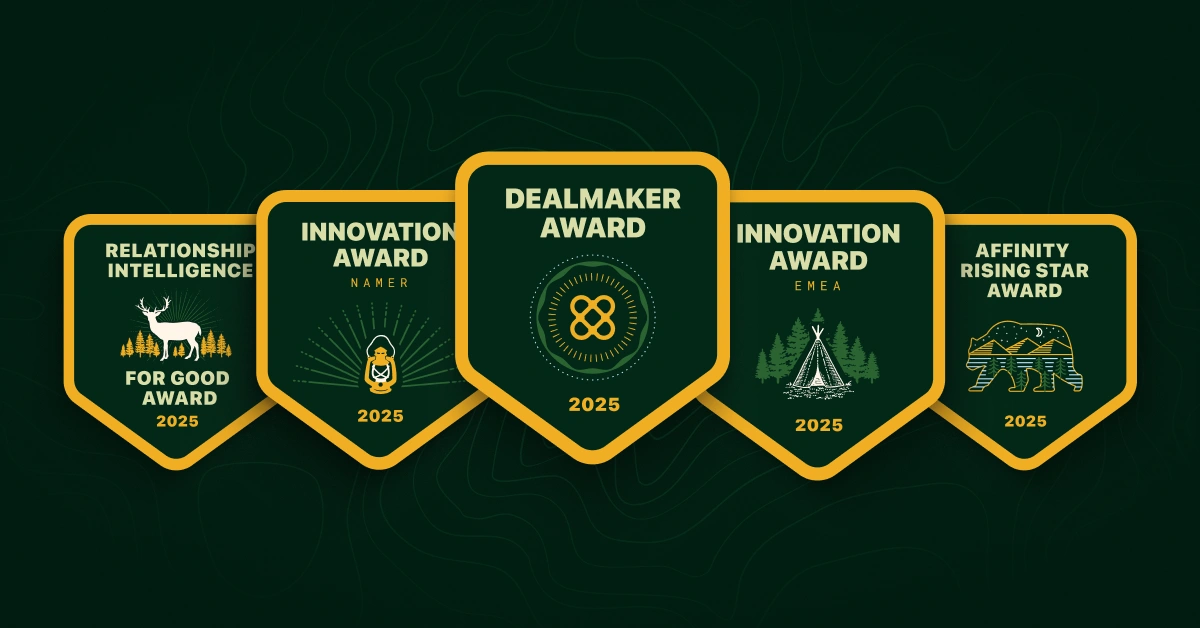Outbound efforts are in overdrive. Affinity platform data shows that email activity and network growth among VCs increased dramatically in the second half of last year as competition for the same “safer bets” amidst economic uncertainty grows ever more fierce.
Associates spend between 40%–60% of their week in their inbox, and probably even more time thinking about how to write the most effective emails. To help cut down on that time, we crowdsourced knowledge from some of the most successful VCs—asking them how to gain trust from founders, when to use automation and when to personalize, and how to say just the right thing to land that first meeting.
Heads up: This is a preview from our new dealmaker’s email playbook. Download your copy today.
Lead with research and relevance
Email length is a hot topic for anyone focusing on outbound. How much is too much? Why would a busy founder want to read a long email?
While you’ll never want to send large blocks of text, length can be interpreted as thorough when you:
✓ Demonstrate how the company fits your investment thesis: Show founders how you can add value as a partner from the outset.
✓ Show niche expertise: Demonstrate deep knowledge of the founder’s industry.
✓ Link out to your own thought leadership: Create a path for founders to dive deeper if they’re curious about you.
<p class="callout">
Kyra Durko, principal at Two Sigma Ventures, uses a three-part strategy to gain the trust of founders in her outreach. Find out what it is in <a href="https://www.affinity.co/guide/the-dealmakers-email-playbook">the dealmaker’s email playbook</a>.
</p>
Know when to automate and personalize
Email automation saves time, but a personalized email gets more attention. Here’s how experts recommend balancing a personal touch with the volume required to close more deals:
✓ Personalize the first email: Every company is different, and deep research is required to demonstrate relevance to the founder. Your first email should show what you know about that specific company and founder.
✓ Keep follow-ups short and sweet: Use automation to save time while still ensuring your email floats to the top of a busy inbox. Follow-ups are where automation can help you scale your initial outreach efforts.
✓ Treat A+ opportunities with care: When you get that gut feeling that an opportunity is gold (or the data says so), ditch the automation altogether and personalize the experience from start to finish.
Test, test, and test again
Email marketers treat outreach like a science. They test subject lines to optimize open rates, calls-to-action to optimize click through rates, and general voice and tone for overall performance. Make sure your Associates:
✓ A/B test subject lines and emails: Break out the proverbial science kit and start testing hypotheses about what encourages founders to open and click on your emails. Be methodical about recording your results and replicating what works.
✓ Allow for individual styles: You're paying your Associates for a reason! Encourage every team member to let their personality shine, and you may even find a pattern in what tone works best.
✓ Send at different times of day: Founders are busy folks, and most of them time-block their email communication. Derek Xiao, investor with Menlo Ventures, says there’s an ideal time of day to send an email to a busy founder. Find out what it is in the dealmaker’s email playbook.
Use high-converting CTAs
Your goal is to book a meeting with a founder, and what you say in your email can make or break whether or not this happens. Just as there’s a science to email optimization, there’s an art to booking meetings. Here’s where you can differentiate yourself:
✓ Offer to meet in-person: We’re past the earlier stages of the pandemic, but in-person meetings are still rare. An offer to visit a founder’s city and chat over coffee will stand out right away.
✓ Reduce friction with a booking tool: Make it easy to book a meeting in the first place. Eliminate back and forth on scheduling and use a booking tool that respects a founder’s limits on time.
✓ Follow-up suggesting other options: If you haven’t heard back, suggest alternate points of discussion or meeting options that can pique interest where there wasn’t before.
Optimize with technology
Our research uncovered that the average deal requires 34 hours of research. Technology can reduce that prospecting time when you use it to:
✓ Set reminders for companies not raising: Don’t miss out on long-term opportunities just because a company isn’t currently fundraising. Use relationship intelligence software to set quarterly or biannual reminders to follow up.
✓ Automate report sends: Know what’s working, at a glance, across your entire team. Automatically pull reports on relevant sourcing activities like funnel progress, number of calls, number of emails sent, number of qualified opportunities, etc.
✓ Eliminate context switching with app integrations: Use Chrome extensions like Affinity Pathfinder to connect a prospect’s website to your organization’s entire network across all Associates, and see if you already have the connections you need for a warm intro.
For more specifics on how to dial in your email outreach this year, get the dealmaker’s email playbook.
{{email-playbook="/rt-components"}}


.webp)




.png)


.webp)
.webp)
